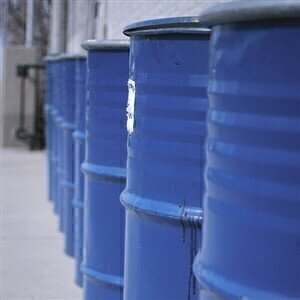Analytical Instrumentation
Ensuring Accurate Biofuels Blend Measurements in Under a Minute with Easy-to-Use Portable Infrared Analysers
Sep 28 2010
Globally, governments are putting more emphasis on sustainable energy sources and are creating energy policies that promote the production and use of biofuels. With the Renewable Fuels Standard-2 (RFS-2), the US set biofuels blending volumes to 12.95 billion gallons for 2010 increasing to 36 billion gallons by 2022. With similar mandates or guidelines coming from other countries, the need to easily and accurately measure biofuels blends becomes more important.
Portable mid-infrared analysers, such as the InfraCal Analysers from Wilks Enterprise, Inc., (USA) offer a quick (under one minute) analytical method to assess the blend ratio of either biodiesel (FAME) in diesel or ethanol in gasoline and can be a valuable asset not only for distributors and terminal managers who blend the fuel, but also for finished product testing by fleet operators and regulatory agencies. These analysers are easily operated by personnel having little or no knowledge of infrared analytical techniques.
The splash blend method is often used for blending biodiesel. With this method, the diesel fuel and B100 are pumped separately into a delivery truck or storage tank and it is assumed the blend will be adequately mixed in the tank or by the time the truck arrives at the delivery site. A demonstration test was recently conducted with the Wilks InfraCal Biodiesel Blend Analyser five minutes after filling the truck for B20. A sample taken from the top measured 11.9% biodiesel while another from the bottom was 24.1%. If the first delivery of fuel is only a few miles away on a smooth road, the chance for delivering an accurate blend/mix is slim.
In-line (injection) blending offers better blend consistency than splash blending and is typically used for ethanol blending at pipeline racks and terminals. It is also becoming more common for biodiesel blending. The biofuel is mixed as it is metered into the pipe with the diesel or gasoline. Additional mixing occurs as the fuels enter the receiving tank or truck. For biodiesel, density and viscosity changes require adjustments to the meters for an accurate blend. Although manufacturers of in-line blending systems claim indisputable accuracy, a quick check for the correct blend gives actual data to validate this claimed assumption.
The approved methods for biodiesel measurement, EN 14078 and the ASTM Method D 7371, both specify midinfrared for the measurement of the biodiesel blend ratio. Infrared analysis works well for FAME because the
biodiesel ester has characteristic infrared absorption due to the carbonyl band at 5.7 micrometers or 1745cm-1. As the concentration of biodiesel goes up, the infrared absorbance at that wavelength increases. The infrared absorbance can be directly calibrated to readout in percent biodiesel.
The same is true for ethanol as it has an infrared absorbance band unique to gasoline at 9.6 micrometers (1042 cm-1). The InfraCal Blend Analysers measure the biofuels by using a filter with the specific wavelength for biodiesel or ethanol. The InfraSpec VFA-IR Spectrometer is a spectral range infrared analyser that includes the wavelengths for biodiesel and ethanol, thus allowing both measurements to be done with the same analyser.
The filter-based infrared design of the Wilks instruments results in portable, rugged analysers that weigh less than 5 pounds and can be battery operated for on-site measurements.
Either analysis is simple, quick and does not require a skilled technician. A fuel sample is placed directly on the exposed sample window of the analyser and in less than a minute the percent ethanol or biodiesel is displayed. The sample is cleaned with a wipe and the analyser is ready for the next measurement.
The following comparison table illustrates that biodiesel measurement results obtained with the Wilks analysers match either ASTM D 7371 or EN 14078 methods. They provide the operator with significant advantages over FT-IR spectrometers in that they are rugged, portable, and easy-to-use. Measurement data is available in less than one minute, making Wilks analysers ideal for on-site use in laboratories, production facilities or distribution centres.
Digital Edition
PIN 25.2 Apr/May
April 2024
In this Edition Safety - Carbon monoxide toxic and flammable gas detection Analytical Instrumentation - Density: A fundamental parameter at critical stages within the petroleum sector...
View all digital editions
Events
May 03 2024 Seoul, South Korea
May 05 2024 Seville, Spain
May 06 2024 Riyadh, Saudi Arabia
May 06 2024 Houston, Tx, USA
May 06 2024 Houston, Tx, USA


















